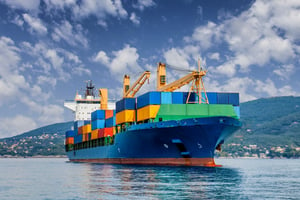Duty Reduction/Duty Deferral Strategies
With the threat of imminent substantial tariffs looming, importers are looking for opportunities to reduce their duty exposure. Here is a list of strategies that may work for your supply chain.
1. Reducing Your Customs Value
All goods coming into the US have a “customs value,” which is the value upon which duty is assessed ad valorem1(a percentage of the value). Most importers use Transaction Value, which, in general, covers sales between unrelated buyers and sellers. Many importers overpay duties by not leveraging legitimate deductions from Transaction Value. Here are some valuation strategies:
Non-Dutiable Charges (NDCs)
Deductions for certain NDCs from Transaction Value are allowed, as long as specific requirements are met. For example, if the price shown on the commercial invoice includes charges for transportation, insurance and other related services incidental to the international shipment of your merchandise from the country of exportation, these charges may be deducted from the value of the merchandise if the actual amount is known (estimates not allowed) and the importer has documentary support.
Discounts
Volume Discounts – As long as the importer can prove the volume discount was in place prior to importation, and the discount is clearly indicated on the invoice, and this is the amount that was paid, the discount can be allowed.
Early Payment Discounts – As long as the importer can prove the early payment discount agreement with the seller was in place prior to importation, and the discount is clearly indicated on the invoice, and this is the amount that was paid, the discount can be allowed.
Other Discounts – CBP has allowed other discounts, such as warranty/damage allowance, merchandise servicing allowance, and general advertising allowance, as long as these agreements are in place prior to import, clearly indicated on the invoice, and conditions satisfied prior to importation.
First Sale
When there are multi-tier “sales” in a supply chain, e.g., manufacturer sells to a middleman and the middleman sells to the importer, importers may be able to reduce their customs value to the “first sale” price between the manufacturer and the middleman, thereby lowering their duty liability, if they are able to satisfy specific conditions. Consult an expert prior to implementing a First Sale strategy.
2. HTS Classification
Should tariffs be targeted toward specific products, importers may want to verify HTS classifications assigned to their goods to ensure they are not erroneously included in a targeted tariff category.
3. Duty Drawback
If importers import goods and subsequently destroy or export the same goods, they may be entitled to duty drawback, i.e., refund of 99% of duties paid. The Regulations and requirements governing duty drawback are substantial, and must be put in place in advance of exportation, so importers should consult an expert for more information if destruction and/or exportation are a possibility.
4. Temporary Importation Bond (TIB)/Transportation Bonds
Some importers routinely import goods temporarily for various reasons, e.g., warranty repair, refurbishment, testing, etc. If the goods were duty free, there was no incentive to undertake the tracking and documentation rigor of the TIB process. Should high tariffs be enacted, however, importers may wish to consider using TIBs to import then re-export goods without paying duties.
Similarly, for goods simply transiting the US, importers not accustomed to paying duties may wish to consider moving these goods in-bond to avoid paying duties altogether.
5. Bonded Warehousing
Importers can place goods in a Customs Bonded Warehouse duty free for up to five years. Duties are due upon withdrawal for consumption in the US. If goods are destroyed or exported, no duties would be owed. Activities such as product manipulations are restricted. NOTE: If these tariffs are lifted while the goods are in a bonded warehouse, these tariffs would not be owed upon withdrawal.
6. Foreign Trade Zones (FTZs)
Importers can place goods in an FTZ duty free indefinitely. Duties are due upon withdrawal for consumption in the US. If goods are destroyed or exported, no duties are owed. Goods in FTZs can be manipulated, including wholly manufactured, with CBP approval. NOTE: If these tariffs are lifted while the goods are in an FTZ, these tariffs would not be owed upon withdrawal.
Country of Origin Changes
Importers may wish to consider purchasing goods whose countries of origin are not subject to high tariffs. Alternatively, importers may be able to purchase certain raw materials/components and/or change the location of key production steps, which could confer origin to a country not targeted for tariffs. These types of origin engineering scenarios should be reviewed by an expert to ensure Regulatory rules of origin are met prior to implementation.
1As with anything, there are exceptions. For a small number of goods, duties are assess based on weight, unit, etc.
.jpg?width=491&height=327&name=iStock-2158808037%20(1).jpg)







Which valuation methodology is right for your company?
All goods coming into the US have a “customs value,” which is the value upon which duty is assessed ad valorem1(a percentage of the value). Regulatory rules determine this value and, while importers must adhere to these rules, many importers have risk exposure by not including everything they should or, equally problematic in these high-tariff times, paying too much in duties by not leveraging legitimate deductions from the customs value to lower their duty liability. The first customs value question an importer needs to ask: How should we be valuing our goods?
Valuation Hierarchy
19 CFR § 152.101 provides the methods of appraisement that must be considered in order2:
- Transaction Value § 152.103: This generally refers to the “sale price,” i.e., one party sells goods to another, often involving a commercial invoice. This is the most common methodology and can be the simplest – as long as there are no hidden “additions to the price paid or payable,” or possible deductions that could be inflating your value.
- Transaction Value of Identical Merchandise § 152.104: If transaction value cannot be determined, and you can identify the value of identical merchandise imported around the same time and in similar quantities, this would be the appropriate methodology. This can be tricky and should be reviewed with your customs broker or a trade attorney.
- Transaction Value of Similar Merchandise § 152.104: If transaction value of identical merchandise cannot be determined, but you can identify the value of similar merchandise, this would be the appropriate methodology. This, too, can be tricky and should be reviewed with your customs broker or a trade attorney.
- Deductive Value § 152.105: If the above cannot be used, then deductive value, i.e., start with the selling price and make appropriate deductions, may be the appropriate methodology.
- Computed Value § 152.106: If the deductive value cannot be determined, then computed value, i.e., the cost of materials and production plus profit, may be appropriate.
- “Fallback Method” § 152.107: If the value of imported merchandise cannot be determined using the hierarchy as is, reasonable adjustments can be made, but should be reviewed by an expert to ensure appropriateness.
1As with anything, there are exceptions. For a small number of goods, duties are assess based on weight, unit, etc.
2Importers may request to use computed value method before the deductive value method. See 19 CFR § 152.101.
- To understand what methods you cannot use, see Unacceptable Valuation Methodologies.
- If you think Transaction Value is right for you, see Transaction Value - Additions and Assists, Transaction Value – NDCs, and Transaction Value – Discounts, to make sure you are calculating the correct value.
Unacceptable Valuation Methodologies
In the Valuation Hierarchy section above, we reviewed the Valuation Hierarchy in the US Customs Regulations, which dictates how importers must value their goods. CBP has also been very clear about how NOT to value your goods, which we cover here.
Unacceptable Values
19 CFR § 152.108 provides a list of unacceptable bases of appraisement. We provide them below, verbatim from the Regulations, with clarification added for the methodologies we occasionally encounter.
A.) The selling price in the United States of merchandise produced in the United States; A product may be made and sold in the US, but importers of the same or similar good cannot use this price as the customs value for duty for their foreign product.
B.) A system that provides for the appraisement of imported merchandise at the higher of two alternative values;
C.) The price of merchandise in the domestic market of the country of exportation; Importers often want to use this price for stock transfers or drop shipments to the U.S. An importer who purchases a good abroad, e.g., Germany, and then ships it to the U.S. cannot use that original domestic sale price in Germany as the customs value when importing into the US. Likewise, goods held in a foreign warehouse cannot be transferred to a warehouse in the US (no sale) at the standard cost of the goods. There must be an uplift.
D.) A cost of production, other than a value determined under 152.106 for merchandise that is identical merchandise, or similar merchandise, to the merchandise being appraised;
E.) The price of merchandise for export to a country other than the United States; Importers may send the same product to various countries and want to use the same price for all, but this cannot be the basis for appraisement for the product coming into the US.
F.) Minimum values for appraisement;
G.) Arbitrary or fictitious values. We occasionally see these with sample or prototype shipments where there is no charge for the good, or with used items. Every value must be supportable.
Additions, including Assists
In this section, we highlight additions to the price that may be missed by importers, putting them at significant risk. Failing to include additions to the price is fertile ground for CBP audits.
Additions to the Price Paid or Payable
In accordance with 19 CFR § 152.103, the following must be added to the price paid or payable for imported merchandise:
i. The packing costsincurred by the buyer with respect to the imported merchandise;
ii. Any selling commissionincurred by the buyer with respect to the imported merchandise;
iii. The value, apportioned as appropriate, of any assist;
iv. Any royalty or license fee related to the imported merchandise that the buyer is required to pay, directly or indirectly, as a condition of the sale of the imported merchandise for exportationto the United States; and
v. The proceeds of any subsequent resale, disposal, or use of the imported merchandise that accrue, directly or indirectly, to the seller.
Many importers are confused by assists, and CBP knows this, so it is important to understand what they are and how to include them in your customs value. 19 CFR § 152.102 define assists as follows:
(1) “Assist” means any of the following if supplied directly or indirectly … by the buyer … for use in connection with the production or the sale for export to the United States of the merchandise:
(i) Materials, components, parts, and similar items incorporated in the imported merchandise.
(ii) Tools, dies, molds, and similar items used in the production of the imported merchandise.
(iii) Merchandise consumed in the production of the imported merchandise.
(iv) Engineering, development, artwork, design work … undertaken elsewhere than in the United States and are necessary for the production of the imported merchandise.
For example, if a company provides molds to its factory to produce widgets, the price is likely not included in the factory invoice because the factory did not pay for them. However, the widget could not be produced without the molds and, therefore, their cost must be included in the price.
Deductions of Non-Dutiable Charges
Here, we highlight non-dutiable charges (NDCs) and the potential for overpaying duties by not leveraging legitimate transportation-related deductions from Transaction Value.
Deductions from the Price Paid or Payable
Deductions for certain NDCs from Transaction Value are allowed, as long as specific requirements are met. For example, if the price shown on the commercial invoice includes charges for transportation, insurance and other related services incidental to the international shipment of your merchandise from the country of exportation, these charges may be deducted from the value of the merchandise if:
1. The actual amount of these charges are known - estimates cannot be deducted
2. Documentation can be produced that shows the actual charges, such as:
-
An invoice or written contract separately listing actual freight/insurance costs
-
A freight/insurance invoice/bill and other costs incidental to the international shipment of merchandise, including foreign inland freight
-
Through bill of lading which shows the actual charges
-
Proof of payment of freight Insurance charges
Examples of NDCs include, but are not limited to:
-
10+2 Management Fee
-
Carrier Agent Booking Fee
-
Carrier Bill Of Lading
-
Documentation Fee
-
Port Security Charge
-
Supply Chain Security Fee
-
Terminal Handling Charge
-
Foreign Customs Clearance Fee
-
Supply Chain Security Fee
-
Terminal Fee
-
Gate Fees
-
Fuel Surcharge
-
Terminal Handling Charge
-
Port Construction Fee
-
Wharfage Charge
-
Freight Forwarder
-
Handling Charge
-
Container Seal Fee
-
Telex Release Fee
-
Brokerage Fee
NOTE: Some deductions come with restrictions, and all come with specific documentary requirements, so we strongly recommend you discuss deductions with your customs broker, a trade consultant, or a trade attorney to ensure the deductions are legitimate under your particular supply chain circumstances.
When Discounts Count
This section provides an overview of discounts and the potential for overpaying duties by not deducting certain discounts from Transaction Value.
Discounts – Considerations
Generally, for a discount to be allowed in determining the Transaction Value, all three of these tests must be met:
-
The discount or price adjustment must be agreed on prior to the importation of the merchandise.
-
The importer must be able to furnish CBP with sufficient documentary evidence to support the existence of the discount and establish that it was agreed to before the time of entry.
-
The discount or price adjustment be unconditional, or, if conditional, all the conditions must be met prior to importation.
Most Common Discounts
Volume Discounts – As long as the importer can prove the volume discount was in place prior to importation, and the discount is clearly indicated on the invoice, and this is the amount that was paid, the discount can be allowed.
NOTE 1: If the volume discount is provided in the form of a credit at the end of a certain period, e.g., year-end, generally the credit cannot be used to reduce retroactively the customs value on previous shipments.
NOTE 2: If the volume discount is tiered, discounts can get complicated. For example, the seller offers 1-9 units at $10/ea., 10-29 units at $9/ea., 30-59 units at $7/ea., and importers imports 8 units on the first shipment and 22 units on the second shipment. The seller puts $10/ea. on the first invoice and $7/ea. on the second invoice, as well as a $3/ea. credit for the 8 units on the first invoice. CBP accepts that the buyer has met its obligation to get to $7/ea. on the second shipment because of the 8 purchased on the first, so $7/ea. is correct. However, the $3/ea. credit cannot be allowed on the second invoice, nor can it be applied retroactively on the first invoice and, therefore, is not considered in the Transaction Value of either shipment.
Early Payment Discounts – As long as the importer can prove the early payment discount agreement with the seller was in place prior to importation, and the discount is clearly indicated on the invoice, and this is the amount that was paid, the discount can be allowed.
Payment Made Post-Importation
The “all the conditions must be met prior to importation” clause of the third test may seem to thwart deduction of discounts when the buyer makes payment after importation. However, CBP has allowed discounts in these scenarios as long as proof of payment can be provided if/when demanded by CBP and documentary evidence supports fulfillment of all conditions to the discount agreement.
First Sale Principle
As mentioned previously, most importers use Transaction Value, which, in general, covers sales between unrelated buyers and sellers. In some cases, there are multiple “sales” in a supply chain, e.g., manufacturer sells to a middleman and the middleman sells to the importer. Importers may be able to reduce their customs value to the “first sale” price between the manufacturer and the middleman, thereby lowering their duty liability, if they are able to satisfy specific conditions. In this section, we provide a high-level view of the First Sale Principle.
First Sale – Considerations
In reviewing applicability of the First sale Principle, it is critical to understand the structure of the transaction. See landmark case: Nisso Iwai America Corp, versus United States. If you have multi-tiered sales involving a middleman, First Sale may be appropriate and could unlock significant duty savings.
Key questions to consider:
-
Are all parties to the transaction functioning as traditional buyers and sellers?
-
Are any of the parties related? If so, you must prove the relationship did not influence the price, i.e., arm’s length.
-
Is there a bona fide sale for export between all parties?
-
Are the goods clearly destined for Export to the United States at the time of the first sale?
-
Is the first sale price at arms’ length? Generally this means the price was settled in a manner consistent with the normal pricing practices of the industry in question and/or in the case of related parties, the price is settled in the same manner as for unrelated parties. CPB’s ICP on Related Party Transactions is a good resource for understanding CBP’s stance on “arms’ length.”
-
Can we prove it? You must have a full documentation trail that supports each question.
Documentation
The following are examples of documentation that can be used to support First Sale. This is not an exhaustive list, and CBP looks at the totality of circumstances for each First Sale scenario they review.
Bona Fide Sale
In order to prove a bona-fide sale exists between the manufacturer and the middleman,
Shipping terms must show transfer of ownership and risk of loss. Whenever the same terms of sale are used in both transactions, there is a concern that the middleman obtains risk of loss and title only momentarily (flash transfer of title) or never at all and thus has nothing to sell to the ultimate purchaser. By itself, flash transfer of title does not equate to failure to show a bona fide sale, however it may cause CBP to more closely scrutinize the transaction.
The title and risk of loss transfer from the manufacturer to the middleman.
Sale contracts need to show ownership and risk of loss and how they pass from seller to buyer.
Actual payments for goods have to be substantiated and supporting documentation available.
For more information, see CBP’s ICP on Bona Fide Sales.
Arms Length Price
Transaction value between a related buyer and seller (e.g., between a manufacturer and middleman, or middleman and buyer) is acceptable only if the transaction satisfies one of two tests: (1) circumstances of sale, or (2) test values. See 19 U.S.C. § 1401a(b)(2)(B).
Test Values - Values previously determined pursuant to actual appraisements of imported merchandise.
Circumstances of Sale - All relevant aspects of the transaction are analyzed including the way the buyer and seller organize their commercial relations and the way in which the price was determined.
Industry Pricing: The price was settled in a manner consistent with the normal pricing practices of the industry in question.
Sales to Unrelated Buyers: The price was settled in a manner consistent with the way the seller settles prices for sales to buyers who are not related to it.
Recovery of All Costs Plus Profit: The price is adequate to ensure recovery of all costs plus a profit that is equivalent to the firm’s overall profit realized over a representative period of time in sales of merchandise of the same class or kind.
For more information on arm’s length pricing, see CPB’s Informed Compliance Publication (ICP) on Related Party Transactions.
Clearly Destined for Export to the U.S.
In order to establish that merchandise is clearly destined for exportation to the United States at the time of sale in a multi-tiered transaction, there must be a complete paper trail relating to the imported merchandise that shows the structure of the entire multi-tiered transaction.
Documentation may include:
-
invoices
-
sales contracts
-
purchase orders
-
proof of payment
-
shipping contracts
In addition, CBP looks for evidence that there is no opportunity for diversion. This may include manufacture, design, and other unique specifications or characteristics of the merchandise made in conformity with the U.S. buyer's or importer’s standards; labels, logos, stock numbers, bar codes and other unique marks; and markings, visas, warranties or other types of certification or characteristics required for the entry into and sale or operation of the imported merchandise in the United States.
For more on sales for export, see CBP’s ICP on Sales for Exportation to the United States.
Contact TAG today!
If you have any questions, please fill out the form below and a member of our TAG team will get back to you soon.


